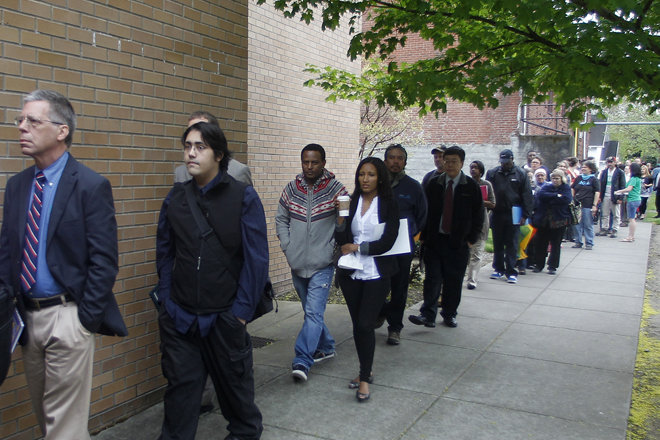This Friday is jobs day and the November numbers–payroll gains, the unemployment rate–will provide one of the first looks at the negative impact of late October’s hurricane Sandy on a major indicator.
Today’s ADP report provides a preliminary glance. The payroll firm reported 118,000 jobs created in the private sector last month, down from 158,000 in October.
Moody’s.com guesstimated that Sandy led to 86,000 fewer jobs in November. Since the ADP reports job gains by firm size, one indicator of Sandy’s impact can be seen in the sharper deceleration last month of job growth at smaller firms, which are more likely to be shut down by the storm than larger firms.
The BLS payroll survey–the official employment metric out Friday–asks employers to report their payrolls as of the middle of the month. The fact that many businesses were closed due to the damage from the storm is expected to lower jobs numbers for November and possibly later months as well. From the Bureau:
Hurricane Sandy struck at the most densely populated region of the United States. Four of the five counties with the highest number of labor force participants per square mile in 2011 were among those hardest hit by Sandy. All 26 of the counties designated as major disaster areas are among the top 10 percent of U.S. counties in terms of labor force density. The average density for these 26 counties, 1,301 labor force participants per square mile, was approximately 30 times the average density of the United States in 2011.
On the other hand, post-storm rebuilding efforts should be expected to increase job numbers in later months, so while the stats will be jumpy for awhile, on average, the underlying trend job growth–around 150K/month by my estimation–should become apparent early next year.
Market expect about 80,000 jobs to be reported on Friday, with the unemployment rate ticking up a tenth to 8%. Adding in Moody’s bias factor, that’s about where we’ve been, so let’s see what happens.
Depending on quality of the caffeine, I’ll be posting first impressions close the 8:30 release time.

